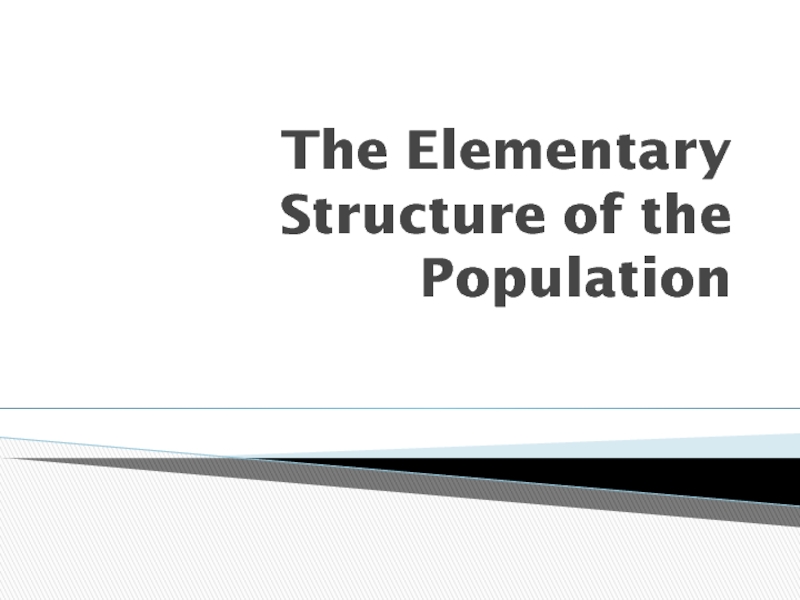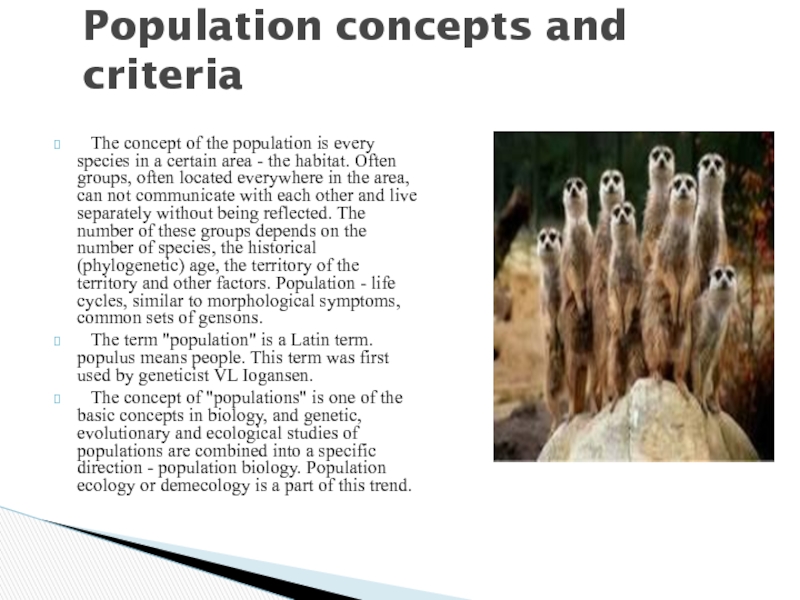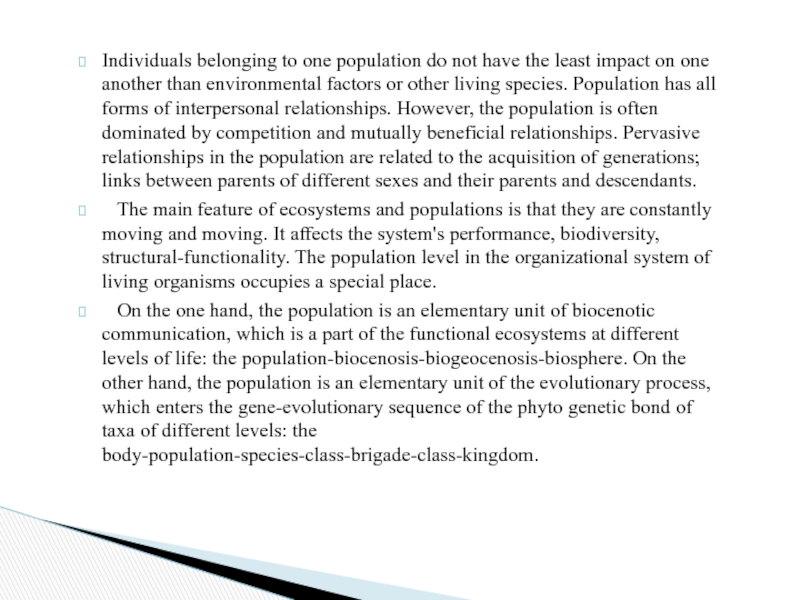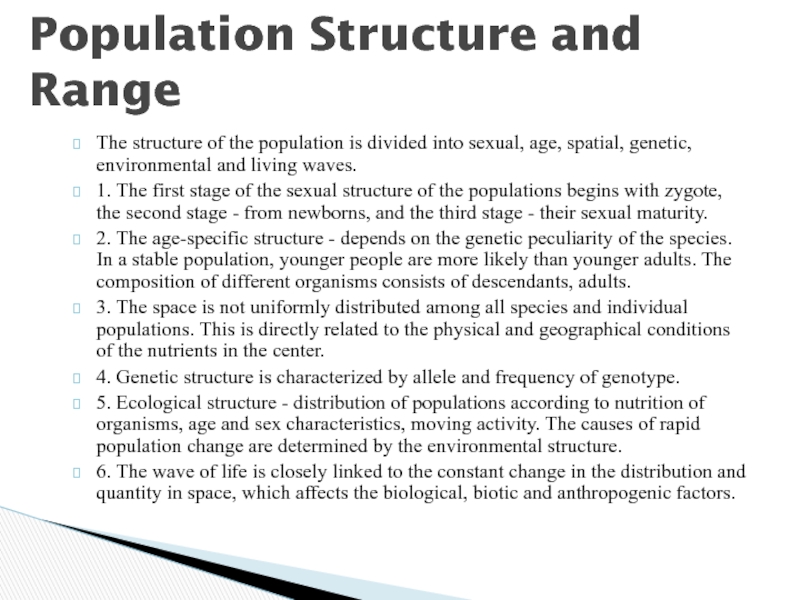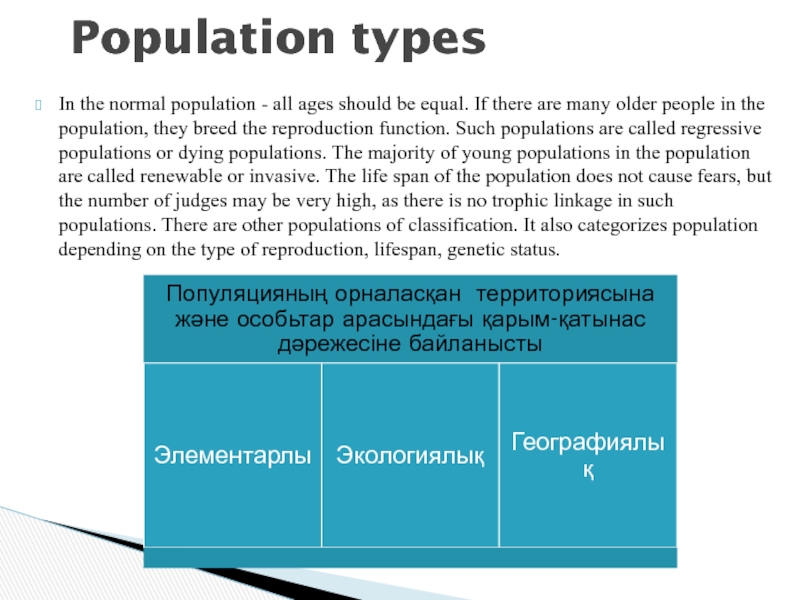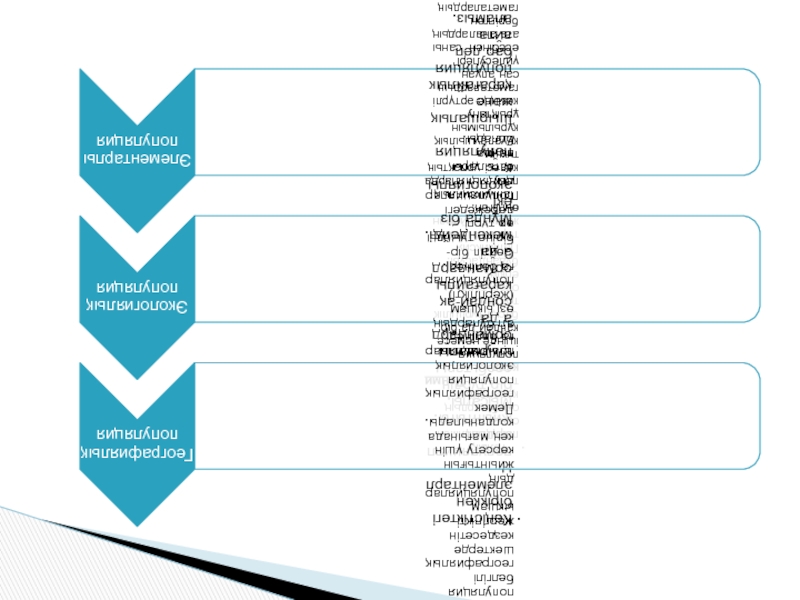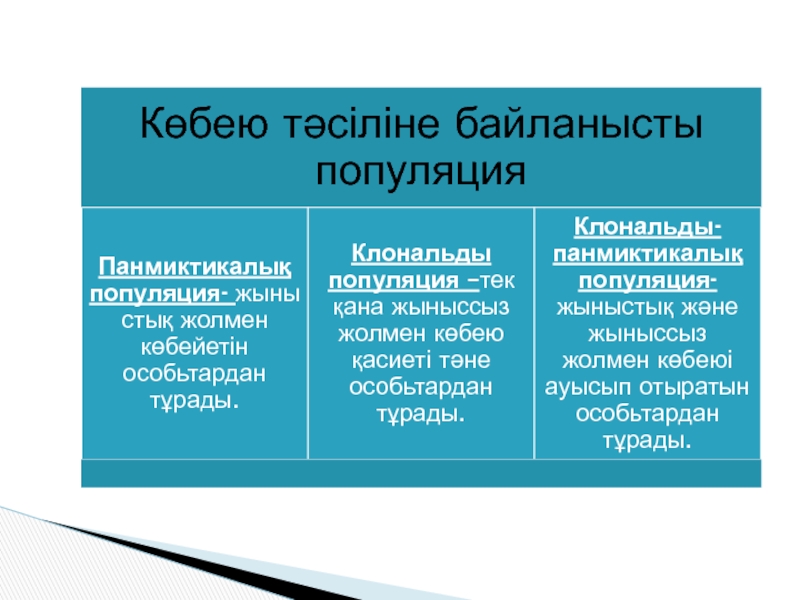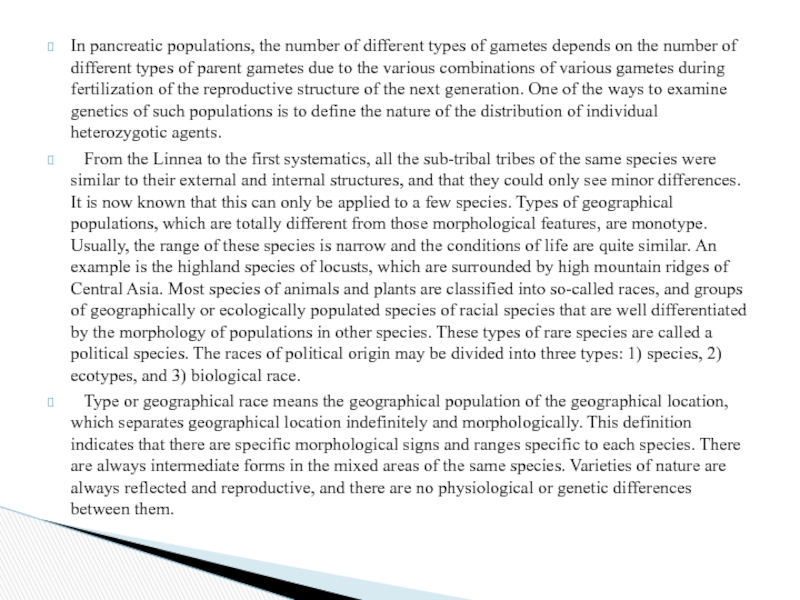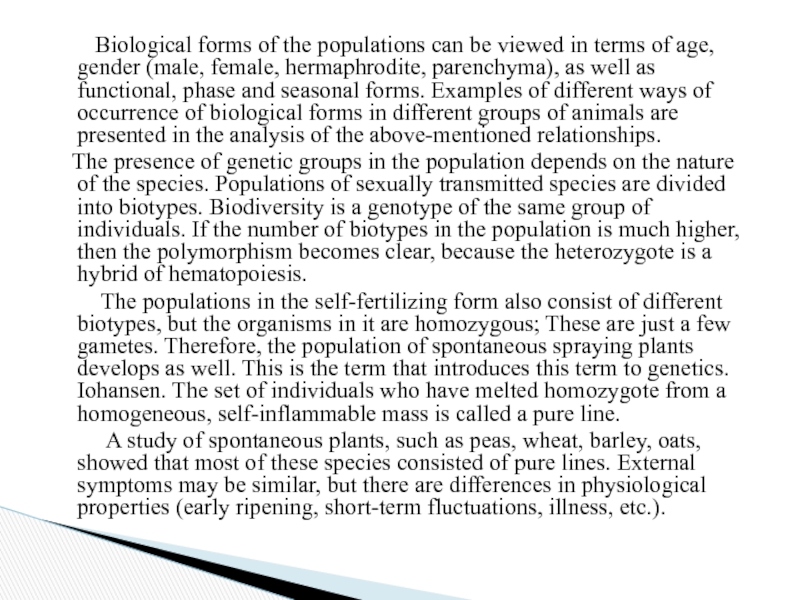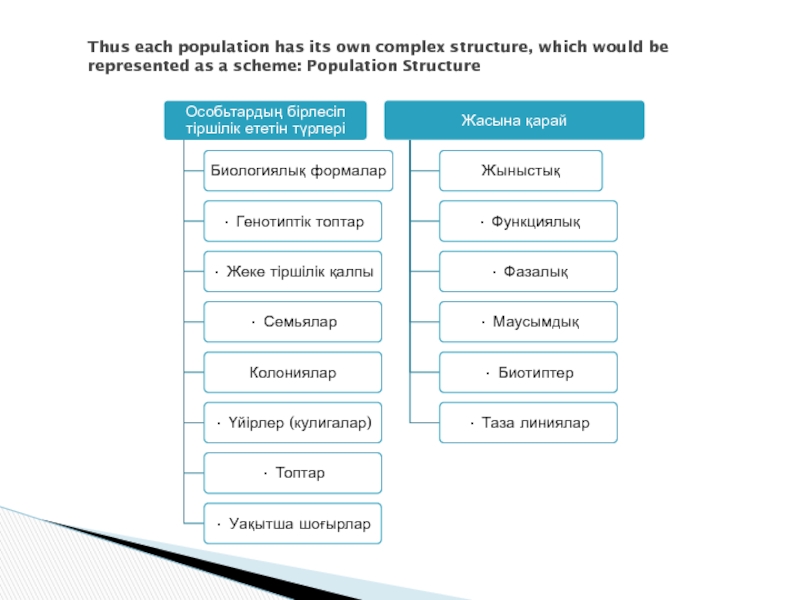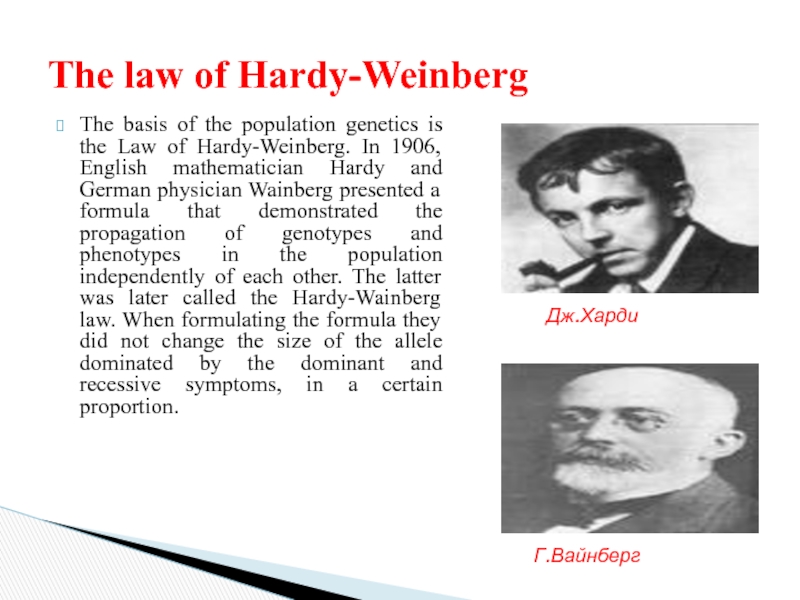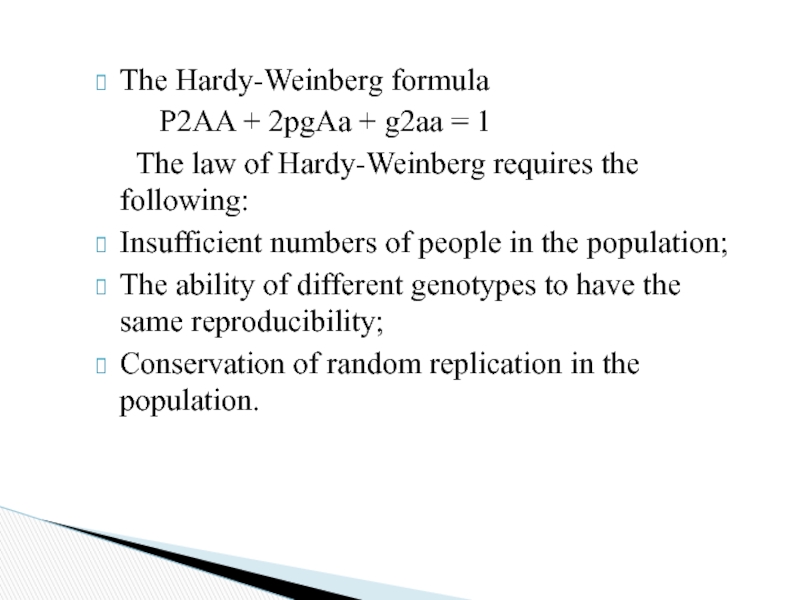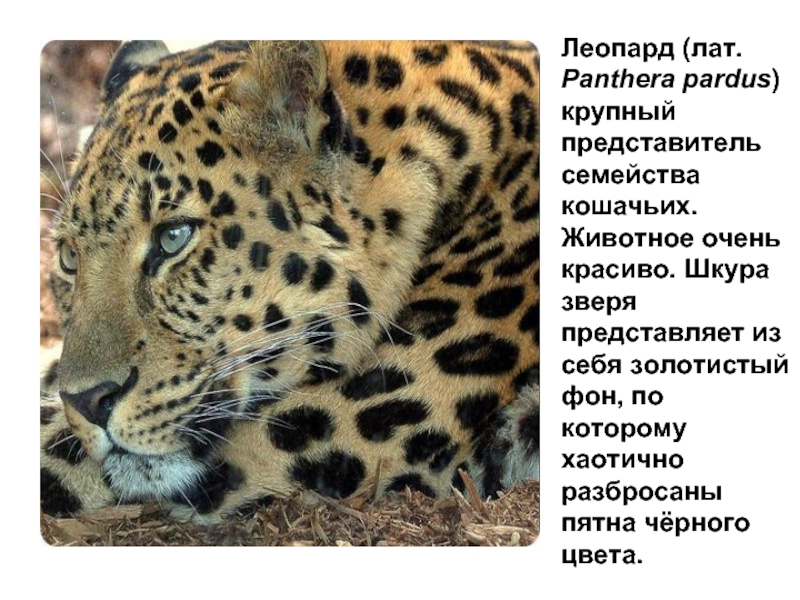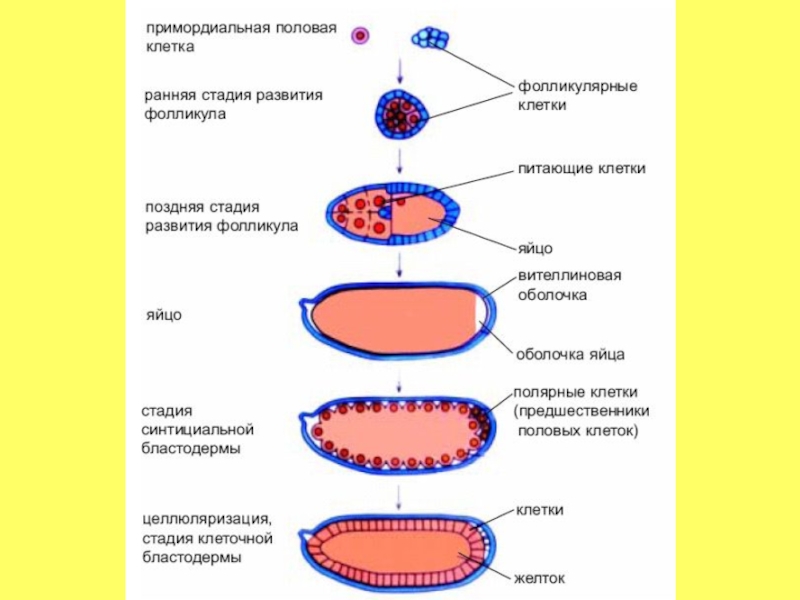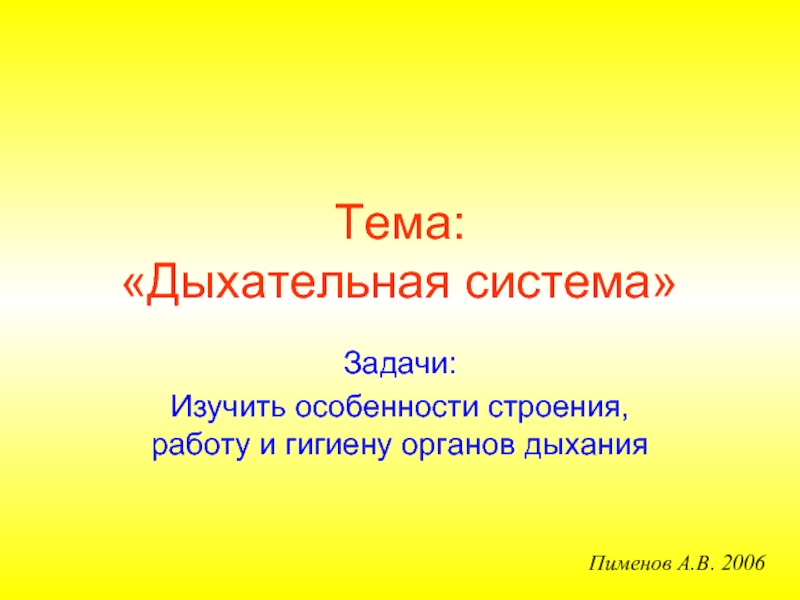- Главная
- Разное
- Дизайн
- Бизнес и предпринимательство
- Аналитика
- Образование
- Развлечения
- Красота и здоровье
- Финансы
- Государство
- Путешествия
- Спорт
- Недвижимость
- Армия
- Графика
- Культурология
- Еда и кулинария
- Лингвистика
- Английский язык
- Астрономия
- Алгебра
- Биология
- География
- Детские презентации
- Информатика
- История
- Литература
- Маркетинг
- Математика
- Медицина
- Менеджмент
- Музыка
- МХК
- Немецкий язык
- ОБЖ
- Обществознание
- Окружающий мир
- Педагогика
- Русский язык
- Технология
- Физика
- Философия
- Химия
- Шаблоны, картинки для презентаций
- Экология
- Экономика
- Юриспруденция
The Elementary Structure of the Population презентация
Содержание
- 1. The Elementary Structure of the Population
- 2. The concept of the population
- 3. Individuals belonging to one population do not
- 6. The structure of the population is divided
- 7. In the normal population - all ages
- 11. In pancreatic populations, the number of different
- 12. Biological forms of
- 13. Thus each population has its own complex
- 14. The basis of the population genetics is
- 15. The Hardy-Weinberg formula
Слайд 2 The concept of the population is every species in
a certain area - the habitat. Often groups, often located everywhere in the area, can not communicate with each other and live separately without being reflected. The number of these groups depends on the number of species, the historical (phylogenetic) age, the territory of the territory and other factors. Population - life cycles, similar to morphological symptoms, common sets of gensons.
The term "population" is a Latin term. populus means people. This term was first used by geneticist VL Iogansen.
The concept of "populations" is one of the basic concepts in biology, and genetic, evolutionary and ecological studies of populations are combined into a specific direction - population biology. Population ecology or demecology is a part of this trend.
The term "population" is a Latin term. populus means people. This term was first used by geneticist VL Iogansen.
The concept of "populations" is one of the basic concepts in biology, and genetic, evolutionary and ecological studies of populations are combined into a specific direction - population biology. Population ecology or demecology is a part of this trend.
Population concepts and criteria
Слайд 3Individuals belonging to one population do not have the least impact
on one another than environmental factors or other living species. Population has all forms of interpersonal relationships. However, the population is often dominated by competition and mutually beneficial relationships. Pervasive relationships in the population are related to the acquisition of generations; links between parents of different sexes and their parents and descendants.
The main feature of ecosystems and populations is that they are constantly moving and moving. It affects the system's performance, biodiversity, structural-functionality. The population level in the organizational system of living organisms occupies a special place.
On the one hand, the population is an elementary unit of biocenotic communication, which is a part of the functional ecosystems at different levels of life: the population-biocenosis-biogeocenosis-biosphere. On the other hand, the population is an elementary unit of the evolutionary process, which enters the gene-evolutionary sequence of the phyto genetic bond of taxa of different levels: the body-population-species-class-brigade-class-kingdom.
The main feature of ecosystems and populations is that they are constantly moving and moving. It affects the system's performance, biodiversity, structural-functionality. The population level in the organizational system of living organisms occupies a special place.
On the one hand, the population is an elementary unit of biocenotic communication, which is a part of the functional ecosystems at different levels of life: the population-biocenosis-biogeocenosis-biosphere. On the other hand, the population is an elementary unit of the evolutionary process, which enters the gene-evolutionary sequence of the phyto genetic bond of taxa of different levels: the body-population-species-class-brigade-class-kingdom.
Слайд 6The structure of the population is divided into sexual, age, spatial,
genetic, environmental and living waves.
1. The first stage of the sexual structure of the populations begins with zygote, the second stage - from newborns, and the third stage - their sexual maturity.
2. The age-specific structure - depends on the genetic peculiarity of the species. In a stable population, younger people are more likely than younger adults. The composition of different organisms consists of descendants, adults.
3. The space is not uniformly distributed among all species and individual populations. This is directly related to the physical and geographical conditions of the nutrients in the center.
4. Genetic structure is characterized by allele and frequency of genotype.
5. Ecological structure - distribution of populations according to nutrition of organisms, age and sex characteristics, moving activity. The causes of rapid population change are determined by the environmental structure.
6. The wave of life is closely linked to the constant change in the distribution and quantity in space, which affects the biological, biotic and anthropogenic factors.
1. The first stage of the sexual structure of the populations begins with zygote, the second stage - from newborns, and the third stage - their sexual maturity.
2. The age-specific structure - depends on the genetic peculiarity of the species. In a stable population, younger people are more likely than younger adults. The composition of different organisms consists of descendants, adults.
3. The space is not uniformly distributed among all species and individual populations. This is directly related to the physical and geographical conditions of the nutrients in the center.
4. Genetic structure is characterized by allele and frequency of genotype.
5. Ecological structure - distribution of populations according to nutrition of organisms, age and sex characteristics, moving activity. The causes of rapid population change are determined by the environmental structure.
6. The wave of life is closely linked to the constant change in the distribution and quantity in space, which affects the biological, biotic and anthropogenic factors.
Population Structure and Range
Слайд 7In the normal population - all ages should be equal. If
there are many older people in the population, they breed the reproduction function. Such populations are called regressive populations or dying populations. The majority of young populations in the population are called renewable or invasive. The life span of the population does not cause fears, but the number of judges may be very high, as there is no trophic linkage in such populations. There are other populations of classification. It also categorizes population depending on the type of reproduction, lifespan, genetic status.
Population types
Слайд 11In pancreatic populations, the number of different types of gametes depends
on the number of different types of parent gametes due to the various combinations of various gametes during fertilization of the reproductive structure of the next generation. One of the ways to examine genetics of such populations is to define the nature of the distribution of individual heterozygotic agents.
From the Linnea to the first systematics, all the sub-tribal tribes of the same species were similar to their external and internal structures, and that they could only see minor differences. It is now known that this can only be applied to a few species. Types of geographical populations, which are totally different from those morphological features, are monotype. Usually, the range of these species is narrow and the conditions of life are quite similar. An example is the highland species of locusts, which are surrounded by high mountain ridges of Central Asia. Most species of animals and plants are classified into so-called races, and groups of geographically or ecologically populated species of racial species that are well differentiated by the morphology of populations in other species. These types of rare species are called a political species. The races of political origin may be divided into three types: 1) species, 2) ecotypes, and 3) biological race.
Type or geographical race means the geographical population of the geographical location, which separates geographical location indefinitely and morphologically. This definition indicates that there are specific morphological signs and ranges specific to each species. There are always intermediate forms in the mixed areas of the same species. Varieties of nature are always reflected and reproductive, and there are no physiological or genetic differences between them.
From the Linnea to the first systematics, all the sub-tribal tribes of the same species were similar to their external and internal structures, and that they could only see minor differences. It is now known that this can only be applied to a few species. Types of geographical populations, which are totally different from those morphological features, are monotype. Usually, the range of these species is narrow and the conditions of life are quite similar. An example is the highland species of locusts, which are surrounded by high mountain ridges of Central Asia. Most species of animals and plants are classified into so-called races, and groups of geographically or ecologically populated species of racial species that are well differentiated by the morphology of populations in other species. These types of rare species are called a political species. The races of political origin may be divided into three types: 1) species, 2) ecotypes, and 3) biological race.
Type or geographical race means the geographical population of the geographical location, which separates geographical location indefinitely and morphologically. This definition indicates that there are specific morphological signs and ranges specific to each species. There are always intermediate forms in the mixed areas of the same species. Varieties of nature are always reflected and reproductive, and there are no physiological or genetic differences between them.
Слайд 12 Biological forms of the populations can be
viewed in terms of age, gender (male, female, hermaphrodite, parenchyma), as well as functional, phase and seasonal forms. Examples of different ways of occurrence of biological forms in different groups of animals are presented in the analysis of the above-mentioned relationships.
The presence of genetic groups in the population depends on the nature of the species. Populations of sexually transmitted species are divided into biotypes. Biodiversity is a genotype of the same group of individuals. If the number of biotypes in the population is much higher, then the polymorphism becomes clear, because the heterozygote is a hybrid of hematopoiesis.
The populations in the self-fertilizing form also consist of different biotypes, but the organisms in it are homozygous; These are just a few gametes. Therefore, the population of spontaneous spraying plants develops as well. This is the term that introduces this term to genetics. Iohansen. The set of individuals who have melted homozygote from a homogeneous, self-inflammable mass is called a pure line.
A study of spontaneous plants, such as peas, wheat, barley, oats, showed that most of these species consisted of pure lines. External symptoms may be similar, but there are differences in physiological properties (early ripening, short-term fluctuations, illness, etc.).
The presence of genetic groups in the population depends on the nature of the species. Populations of sexually transmitted species are divided into biotypes. Biodiversity is a genotype of the same group of individuals. If the number of biotypes in the population is much higher, then the polymorphism becomes clear, because the heterozygote is a hybrid of hematopoiesis.
The populations in the self-fertilizing form also consist of different biotypes, but the organisms in it are homozygous; These are just a few gametes. Therefore, the population of spontaneous spraying plants develops as well. This is the term that introduces this term to genetics. Iohansen. The set of individuals who have melted homozygote from a homogeneous, self-inflammable mass is called a pure line.
A study of spontaneous plants, such as peas, wheat, barley, oats, showed that most of these species consisted of pure lines. External symptoms may be similar, but there are differences in physiological properties (early ripening, short-term fluctuations, illness, etc.).
Слайд 13Thus each population has its own complex structure, which would be
represented as a scheme: Population Structure
Слайд 14The basis of the population genetics is the Law of Hardy-Weinberg.
In 1906, English mathematician Hardy and German physician Wainberg presented a formula that demonstrated the propagation of genotypes and phenotypes in the population independently of each other. The latter was later called the Hardy-Wainberg law. When formulating the formula they did not change the size of the allele dominated by the dominant and recessive symptoms, in a certain proportion.
The law of Hardy-Weinberg
Дж.Харди
Г.Вайнберг
Слайд 15The Hardy-Weinberg formula
P2AA + 2pgAa +
g2aa = 1
The law of Hardy-Weinberg requires the following:
Insufficient numbers of people in the population;
The ability of different genotypes to have the same reproducibility;
Conservation of random replication in the population.
The law of Hardy-Weinberg requires the following:
Insufficient numbers of people in the population;
The ability of different genotypes to have the same reproducibility;
Conservation of random replication in the population.
